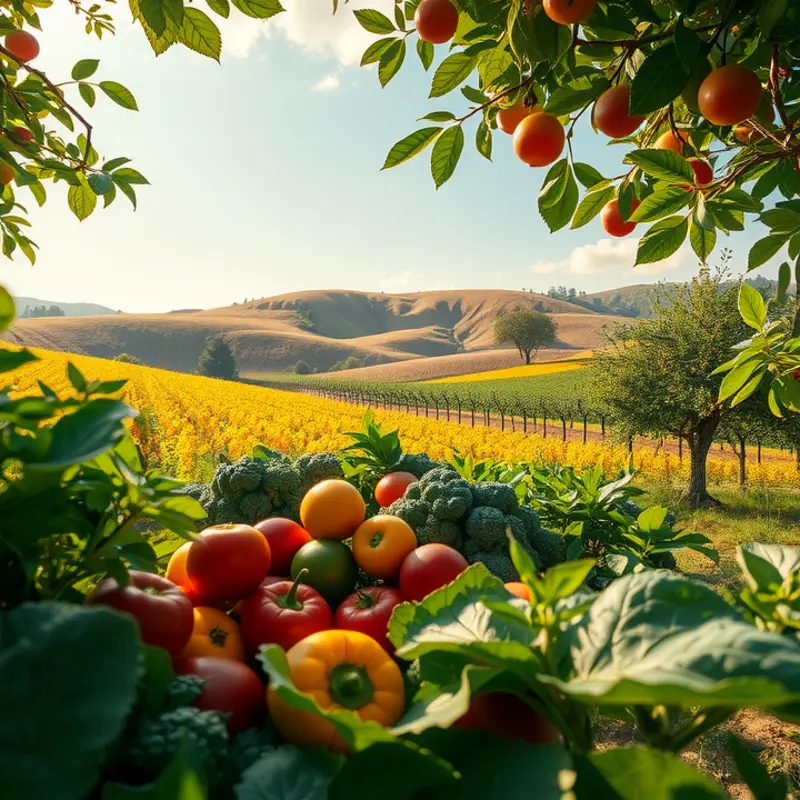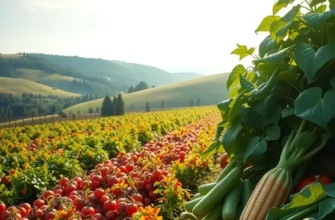Food waste is a growing concern, yet freezing offers a smart solution to extend the life of many foods. By understanding what foods freeze well and how to freeze and store them effectively, you can minimize waste and ensure your meals remain fresh and nutritious. This guide aims to equip you with practical tips for optimizing your kitchen storage and meal preparation techniques.
Five Foods That Freeze Exceptionally Well

1. Berries
Berries, including strawberries, blueberries, and raspberries, freeze beautifully while maintaining their sweet flavor and nutritional value. To prep berries for freezing, first rinse them gently under cold water to remove dirt. Pat them dry thoroughly, as excess moisture can lead to ice formation during freezing. Lay the berries in a single layer on a baking sheet and freeze until solid, then transfer to an airtight container or freezer bag. This method, known as flash freezing, prevents the berries from clumping together, making it easy to grab just the amount you need for smoothies, baking, or snacks.
2. Bread
Freezing bread can significantly extend its shelf life without sacrificing taste. To prepare bread for freezing, ensure it’s completely cooled before wrapping it tightly in aluminum foil or a freezer bag to prevent freezer burn. For best results, slice the bread prior to freezing, allowing individual portions to be thawed as needed. To thaw, simply leave the slices at room temperature or pop them directly into a toaster or oven for a fresh-out-of-the-oven taste.
3. Cooked Grains
Cooked grains like rice, quinoa, and barley freeze exceptionally well. They make meal prep a breeze and reduce food waste. After cooking, allow grains to cool completely. Transfer them into portioned freezer bags or containers, removing as much air as possible to prevent ice crystals from forming. Label with the date and type of grain. When you’re ready to use them, add the frozen grains directly to your dish or defrost in the fridge overnight.
4. Soups and Stews
Soups and stews are not only warm and comforting, but they also freeze with ease, retaining robust flavors and hearty textures. Before freezing, cool the soup or stew to room temperature. If possible, use shallow containers to ensure quicker freezing and thawing. Leave some space at the top of the container for expansion. To thaw, either reheat the soup directly on the stovetop over low heat or let it thaw in the refrigerator overnight.
5. Butter
Butter is a versatile ingredient that freezes exceptionally well, preserving its creamy texture. This is especially handy for stocking up during sales. Simply place the unopened package directly in the freezer, or wrap individual sticks in plastic wrap followed by aluminum foil. To use, transfer the butter to the refrigerator to thaw gradually, ensuring an even texture for baking and cooking. Curious how freezing other ingredients impacts their usability? Check out minimal prep dinner ideas for inspiration on making the most of your pantry items.
By incorporating these freezing techniques, you enhance the longevity of fresh foods, prevent waste, and always have high-quality ingredients ready for your culinary endeavors.
The Right Way to Freeze: Tips for Different Foods

Freezing food is an excellent way to extend its shelf life while retaining nutritional value. However, not all foods freeze equally, which is why understanding proper freezing techniques is crucial.
When freezing fruits, opt for those that are firm and ripe. Most fruits can be frozen after washing and drying thoroughly. For berries, lay them out in a single layer on a tray before transferring to a container. This prevents clumping, so you can easily grab a handful instead of a frozen brick. Bananas can be frozen whole or sliced; just remember to peel them first. Citrus fruits freeze well as juices, but whole fruits might become mushy.
Vegetables often require blanching before freezing. Blanching, a process involving a brief boil followed by an ice bath, stops enzyme actions that degrade quality. It also helps preserve color, texture, and flavor. Once cooled, dry vegetables completely. Pack them in airtight containers or vacuum-seal bags to prevent freezer burn. Common vegetables ideal for freezing include peas, broccoli, and bell peppers.
When freezing meats, one of the most important steps is proper packaging. Divide large quantities into meal-sized portions beforehand for easier handling later. Wrap tightly in plastic or aluminum foil, then place them in freezer bags to double the protection. Removing as much air as possible from bags minimizes oxidation and freezer burn. Label bags with the date and type of meat for easy tracking.
For prepared meals, such as casseroles or soups, let them cool completely before freezing. Splitting meals into individual-sized containers not only speeds up the freezing process but also makes future reheating more practical. Consider using freezer-safe glass containers, which are often more eco-friendly. For more sustainable kitchen storage choices, you might find this eco-smart kitchen storage guide useful.
Proper packaging and labeling are integral to extending the lifespan of your frozen foods. Always choose packaging that offers a good seal, is moisture-resistant, and is easy to label. Write the type of food and date of freezing on each package. By organizing your freezer and referencing these labels, you’ll reduce waste and improve meal planning efficiency.
Preventing freezer burn is another key focus. This common problem arises when air contacts the surface of the food, resulting in dry patches. Aside from using airtight containers, layer wax paper or parchment between stacked items. Maintaining your freezer at or below zero degrees Fahrenheit further reduces the risk of freezer burn.
Remember, even frozen foods have a lifespan. Periodically check the contents of your freezer and consume items in order of freezing. Fruits and vegetables can last up to a year, meats up to six months, while prepared meals should ideally be consumed within a few months for best results.
Mastering the art of freezing calls for a bit of initial investment in time and materials, but the payoff manifests in reduced food waste and a kitchen that supports your culinary needs seamlessly.
Final words
Freezing food is a practical way to extend shelf life and reduce waste in your kitchen. With the right knowledge of which foods freeze well and how to freeze them properly, you can ease the burden of meal planning while optimizing your food budget. Remember to prepare and package your items thoughtfully, ensuring they remain fresh and ready to use. By implementing these strategies, you can enjoy greater efficiency in your meal preparation and contribute to a more sustainable way of living. Embrace the freezer as your ally in food management!







